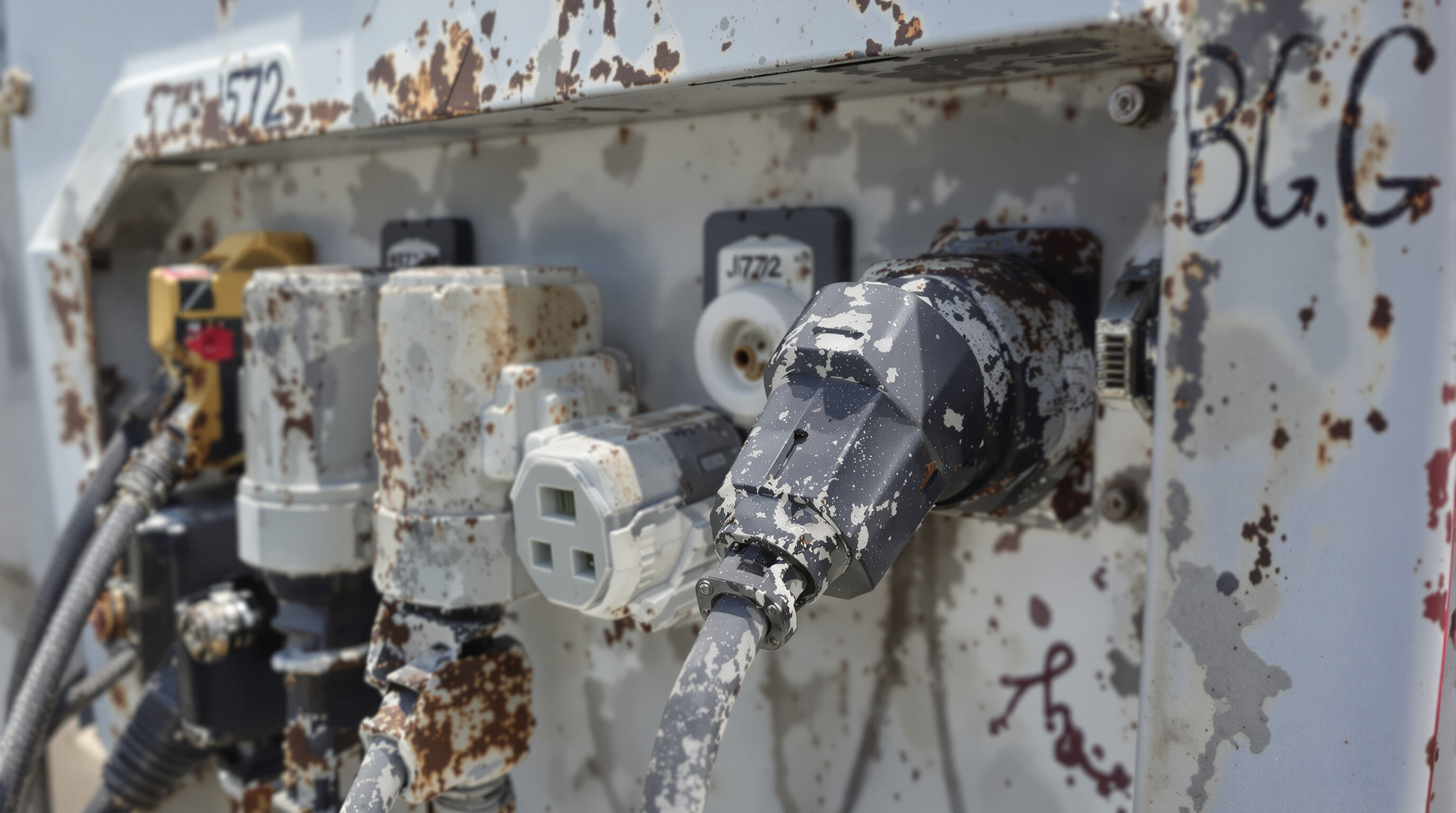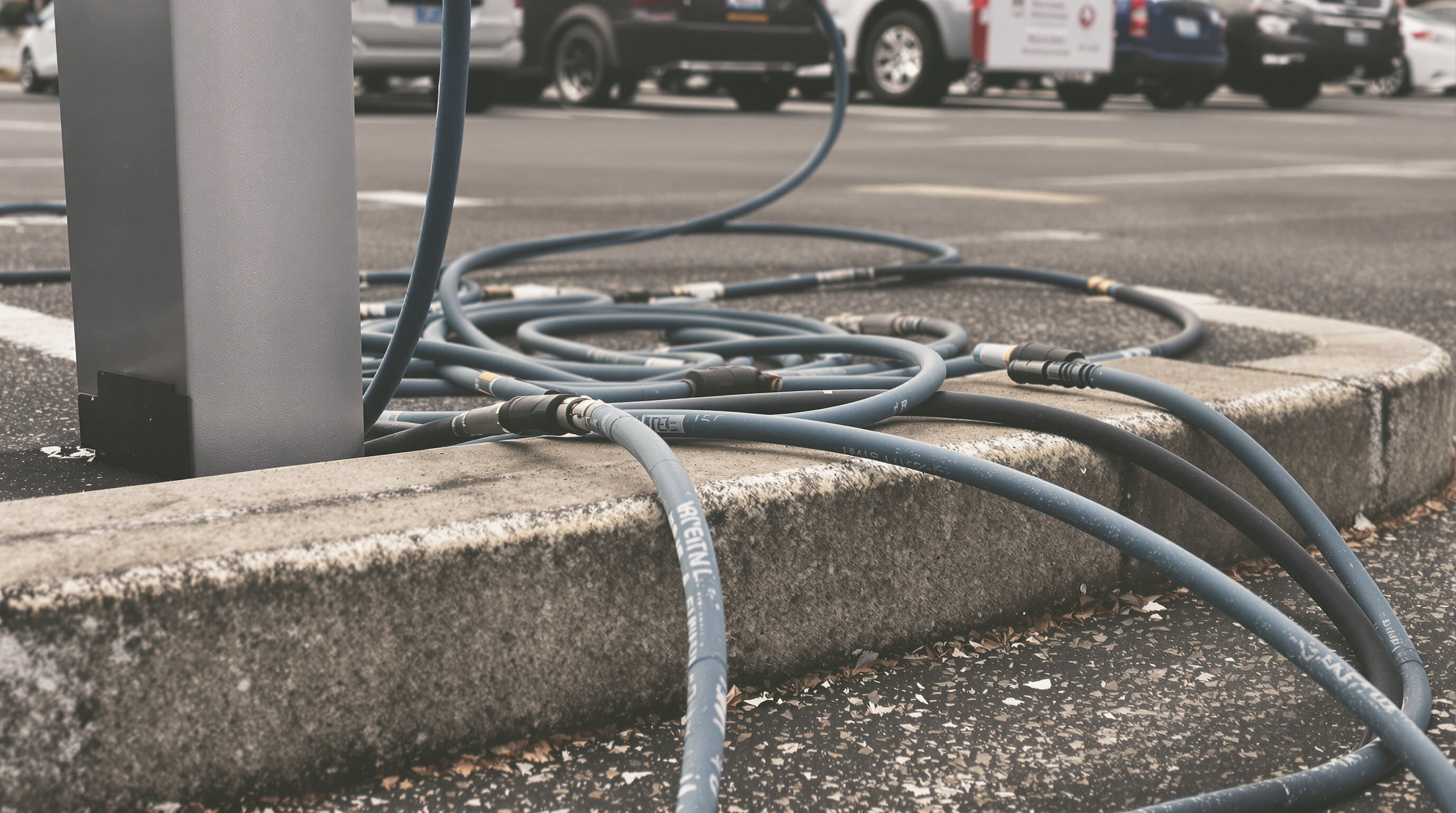Understanding J1772 Adapter Types and Vehicle Compatibility
Why SAE J1772 Dominates North American EV Charging
SAE J1772 became the go to charging port for electric vehicles throughout North America thanks to cooperation among various industry players. The Society of Automotive Engineers keeps this connector updated, and it works with both Level 1 (using regular household voltage at 120V) and Level 2 (higher power at 240V) AC charging systems. Most people find that the maximum output of around 19.2 kW covers about three quarters of their daily driving range requirements according to research from Sciencedirect in 2024. When they officially set standards back in 2009, almost all non Tesla electric cars on sale in America could plug into these stations. This created one common system instead of multiple incompatible options, which made things much simpler for consumers and helped speed up installation of public charging points across the country.
How J1772 Standards Ensure Universal EV Compatibility
The J1772 connector has this five pin setup that actually includes both safety features and ways for the vehicle and charger to talk to each other, which helps stop electrical problems when they connect. Looking at various connector options out there, the 2024 comparison research indicates something interesting about J1772 stations. They work with pretty much every major electric car on the market these days because they share common signals such as Pulse Width Modulation or PWM for short. What does this mean? Well, drivers can pretty much plug into any of those 136 thousand plus public charging spots across the country regardless of what brand their car is. Just keep in mind that if someone wants faster DC charging, they'll need different CCS connectors since those handle higher voltages.
J1772 vs. Tesla Connectors: Bridging the Gap with Adapters
Tesla's new NACS connector has its advantages with smaller size and built-in DC functionality, but most public charging still relies on the old J1772 standard. Around 86 percent of stations outside Tesla networks stick with J1772, which means owners need an adapter to plug in. The certified versions of these adapters do keep things safe by copying the original temperature sensors and locking features, even though there are some efficiency losses. Industry insiders mention about a 12% drop when converting from AC to DC power through these adapters, something that affects real world performance.
Selecting the Right J1772 Adapter for Your EV Model
| Compatibility Factor | J1772-Specific Requirements |
|---|---|
| Charging Level | Level 1/2 AC only |
| Max Current Rating | 80A continuous (240V) |
| Safety Certifications | UL 2251, SAE J1772 |
| Vehicle Port Shape | Round with notch alignment |
Prioritize adapters matching your EV’s onboard charger capacity—exceeding 40A requires liquid-cooled cables. Verify UL certification to avoid connection failures, which account for 31% of adapter-related service calls (Ponemon Institute 2023).
Protecting J1772 Adapters from Environmental Exposure

How UV Radiation, Moisture, and Temperature Degrade EV Charging Equipment
When exposed to UV rays for extended periods, adapter housings start to break down. The plastic becomes brittle over time and loses its original color, making it hard to spot any hidden damage underneath. Water getting into the system is another big problem because it eats away at those copper contacts inside. According to research from the EV Infrastructure Alliance back in 2023, this corrosion actually increases electrical resistance by as much as 15%. And let's not forget about extreme temperatures either. Adapters face everything from freezing cold at -22 degrees Fahrenheit all the way up to scorching heat reaching 122 degrees. These temperature extremes really take their toll on seals throughout the year. All together, these issues lead to a drop in charging efficiency somewhere between 3% and 7% each year for adapters that aren't properly protected against environmental wear and tear.
Real-World Performance: Coastal vs. Arid Climate Impact on Durability
Coastal environments accelerate J1772 failure rates by 2.1x compared to arid regions due to saltwater corrosion. A 2023 durability study revealed:
- Coastal adapters: 72% showed terminal oxidation within 18 months
-
Desert adapters: 58% developed UV-induced housing cracks in 2 years
Humidity above 60% causes 34% faster contact erosion than dry heat exposure.
Best Practices for Shielding Adapters from Harsh Weather Conditions
- Use silicone protective caps when connectors aren’t in use
- Store adapters in insulated cases during temperature extremes (<32°F or >95°F)
- Apply dielectric grease quarterly on pins in high-humidity regions
- Install UV-blocking sleeves for desert/altitude deployments
Monthly inspections of strain reliefs and contact surfaces prevent 89% of weather-related failures in EV charging systems.
Minimizing Physical Wear and Tear on Connectors and Cables

Common Causes of Mechanical Damage in J1772 Charging Cables
The J1772 charging cables have three main problems that shorten their lifespan. First, they get bent repeatedly near the connectors. Second, people handle them improperly which creates tension on the cable. And third, rubbing against rough surfaces causes damage over time. Research indicates that around two thirds of early cable failures happen right where the cable connects to the plug because someone bent it too sharply below what's considered safe for the material. This becomes even worse in parking lots where folks tend to throw cables over curbs or stretch them tight across pavement edges. The constant friction wears down the insulation much faster than normal. Some electric vehicle owners report seeing cracks form after just a few months of regular use in these conditions.
Grit buildup in those connector ports is actually responsible for about a quarter of all contact corrosion problems we see these days. And let's not forget about how people coil their cables wrong too many times. When folks twist them into tight little loops instead of using that figure eight pattern everyone recommends, it really takes a toll on the internal wires over time. Take a look at commercial electric vehicle fleets and things get even worse. These guys experience cable wear and tear at around 40% faster rates than what regular home users typically face. Makes sense when you think about it though. The constant plugging and unplugging combined with all that road grime from vehicles just beats up on the connections much quicker than most residential setups ever encounter.
Routine Maintenance and Cleaning for Optimal Performance
Why Regular Cleaning Prevents Corrosion and Connection Failures
Regular cleaning of those J1772 EV charging ports really helps avoid long term damage caused by all sorts of stuff hanging around outside. When road salt mixes with moisture and gets into the connector, it starts these chemical reactions that slowly eat away at the copper contacts inside. That's actually one of the main reasons why so many people have trouble getting their cars to charge properly. According to that recent report from ANSI in 2024, failing to maintain these charging points costs businesses about $740,000 every year in repairs alone. And if we look at specific numbers, places where there's lots of brine on roads see corrosion happening nearly 2/3 faster than areas with dry weather conditions. Dust buildup isn't great either since it can make the electrical connection between vehicle and charger worse by almost 18%, according to those same findings.
Step-by-Step Guide to Safely Clean and Inspect J1772 Connectors
- Power off both vehicle and charger before disconnecting
- Wipe contacts with a lint-free cloth dampened in 90% isopropyl alcohol
- Inspect terminals under bright light for:
- Pitting deeper than 0.2mm (replace if present)
- Discoloration beyond standard bronze patina
- Check housing for cracks compromising IP54 weatherproof rating
- Measure pin spring tension—replace if below 12N retention force (SAE J1772-2023 standard)
Allow components to dry 15 minutes before reconnection. For heavily soiled connectors, use SAE-approved contact cleaners with <0.1% non-volatile residue. Annual professional inspections are recommended when charging cycles exceed 3,000 uses. Always verify replacement parts meet UL 2251 and SAE J1772 certifications.
Ensuring Safety and Compliance with Certification Standards
The J1772 EV charging adapters need solid safety design work plus independent testing to keep them working properly after all those charge cycles. These aren't just regular power plugs. They have to pass the SAE International J1772-2022 requirements which specify at least 10 megaohms of insulation resistance. Plus they need to handle extreme temperatures from minus 40 degrees Celsius right up to 105 degrees. Meeting these specs makes sure they'll work with almost all electric vehicles sold in North America today, covering about 96 percent of models on the road.
Key Safety Features Built into J1772 Connector Design
When engineers install automatic current shut off systems, they're looking at response times around 25 milliseconds once ground faults or voltage problems get detected. The spring loaded contact pins hold on with about 15 Newtons of force, which actually beats SAE standards by nearly a third. And those special polymer housings? They stop arc tracking issues from happening even when humidity hits almost 100%. All these design choices make a real difference too safety wise stuff. According to data from National Electrical Manufacturers Association in their 2023 report, products with these kinds of features cut down fire hazards by almost nine out of ten cases compared to older adapter models that don't meet compliance requirements.
OEM vs. Aftermarket Adapters: Risks and Certification Differences
While OEM J1772 adapters undergo 250+ validation tests simulating decade-long use cycles, unauthorized aftermarket versions often skip critical UL 2251 certification steps. A 2022 study found 31% of uncertified adapters exceeded safe temperature thresholds during 40A charging, compared to 0.2% failure rates in UL-certified models.
How to Verify UL and SAE Compliance for Long-Term Reliability
Always confirm dual UL (Underwriters Laboratories) and SAE International certification marks near the connector collar. Reputable manufacturers provide online validation portals where users can:
| Verification Step | Technical Requirement |
|---|---|
| Certification Check | Valid UL-E313530 or SAE J1772-2022 file |
| Materials Validation | IP67 waterproof rating documentation |
| Load Testing Proof | 10,000+ mating cycle test results |
For ongoing compliance, annual third-party inspections are recommended—particularly after exposure to extreme weather events that can degrade dielectric materials.
FAQ Section
What is the main advantage of the SAE J1772 charging standard?
The SAE J1772 provides a universal standard for Level 1 and Level 2 AC charging, ensuring compatibility across most electric vehicles in North America. This simplifies consumer use and infrastructure development.
Why do Tesla owners need adapters for J1772 chargers?
Tesla's proprietary NACS connector is different from the J1772 standard. Therefore, Tesla owners need an adapter to connect their vehicles to J1772 public charging stations.
How can environmental factors impact the durability of J1772 adapters?
Environmental factors like UV radiation, moisture, and extreme temperatures can degrade the materials of J1772 adapters, leading to reduced charging efficiency and potential failures over time.
What maintenance steps can extend the life of J1772 connectors and cables?
Regular cleaning, avoiding sharp bends, storing in insulated cases during extreme weather, and using protective caps can extend the life of J1772 connectors and cables.
How can I ensure my J1772 adapter is reliable and safe?
Verify that your J1772 adapter has UL and SAE certifications, and purchase OEM parts to ensure reliability and safety through extensive validation tests.
Table of Contents
- Understanding J1772 Adapter Types and Vehicle Compatibility
- Protecting J1772 Adapters from Environmental Exposure
- Minimizing Physical Wear and Tear on Connectors and Cables
- Routine Maintenance and Cleaning for Optimal Performance
- Ensuring Safety and Compliance with Certification Standards
-
FAQ Section
- What is the main advantage of the SAE J1772 charging standard?
- Why do Tesla owners need adapters for J1772 chargers?
- How can environmental factors impact the durability of J1772 adapters?
- What maintenance steps can extend the life of J1772 connectors and cables?
- How can I ensure my J1772 adapter is reliable and safe?

